The alleys of Montescudaio are deserted at lunchtime. The only noise that can be heard is the rustling of the wind that rises from the sea and creeps through the narrow stone houses in the upper part of the village and then descends to sweep the two main streets, almost two parallel straight lines joined together by a labyrinth of alleys, vaults, and stairways, where the few craft businesses remaining in the historic center at this hour keep their doors closed. There is no reason to keep open: the town is cut off from mass tourism circuits, and there are not many travelers who from the sea of Cecina and the Livorno coast trespass into the province of Pisa and climb up to Montescudaio, even if the trip is short-lived: from Cecina it will be a ten-minute drive, no more, along a nimble scenic road through a forest of holm oaks to the foot of what was once the village’s castle.
The castle was that of the Della Gherardesca counts, the first tenants of the feud, as early as the 11th century: they settled here, so much so that a branch of the family, the “counts of Montescudaio,” was born. They were decidedly difficult in character, haughty and unconciliatory, to such an extent that they even had the audacity to rebel against the Republic of Pisa, on which the village depended. The counts of Montescudaio succeeded in bringing most of the castles on the coast to their side: Rosignano, Vada, Bibbona, Guardistallo. And for the Pisans it was a kind of betrayal. They managed to tame the accounts with difficulty, but the consequences were not dramatic: it was better not to provoke such unruly feudal lords. It was up to the Montescudaini to send the counts away: it happened after 1406, when Pisa was conquered by Florence, and the Florentines, in the seventies, granted Montescudaio to constitute itself as a municipality after yet another volte-face by the counts, this time to the detriment of Florence, which had also made them vicars of Maremma.
The only evidence of these historical events today are the remains of the castle, partially destroyed following an earthquake that struck the area in 1846. A castle to be understood in a broad sense, since inside it were the church, rectory, Praetorian Palace, houses, gardens. Today, however, only the bastion of the Guardiola remains, an ancient watchtower that has become a sort of spectacular belvedere over the Cecina Valley, with the view open to embrace the sea.
 |
| The view from the terrace of the Guardiola tower. Ph. Credit Finestre Sull’Arte |
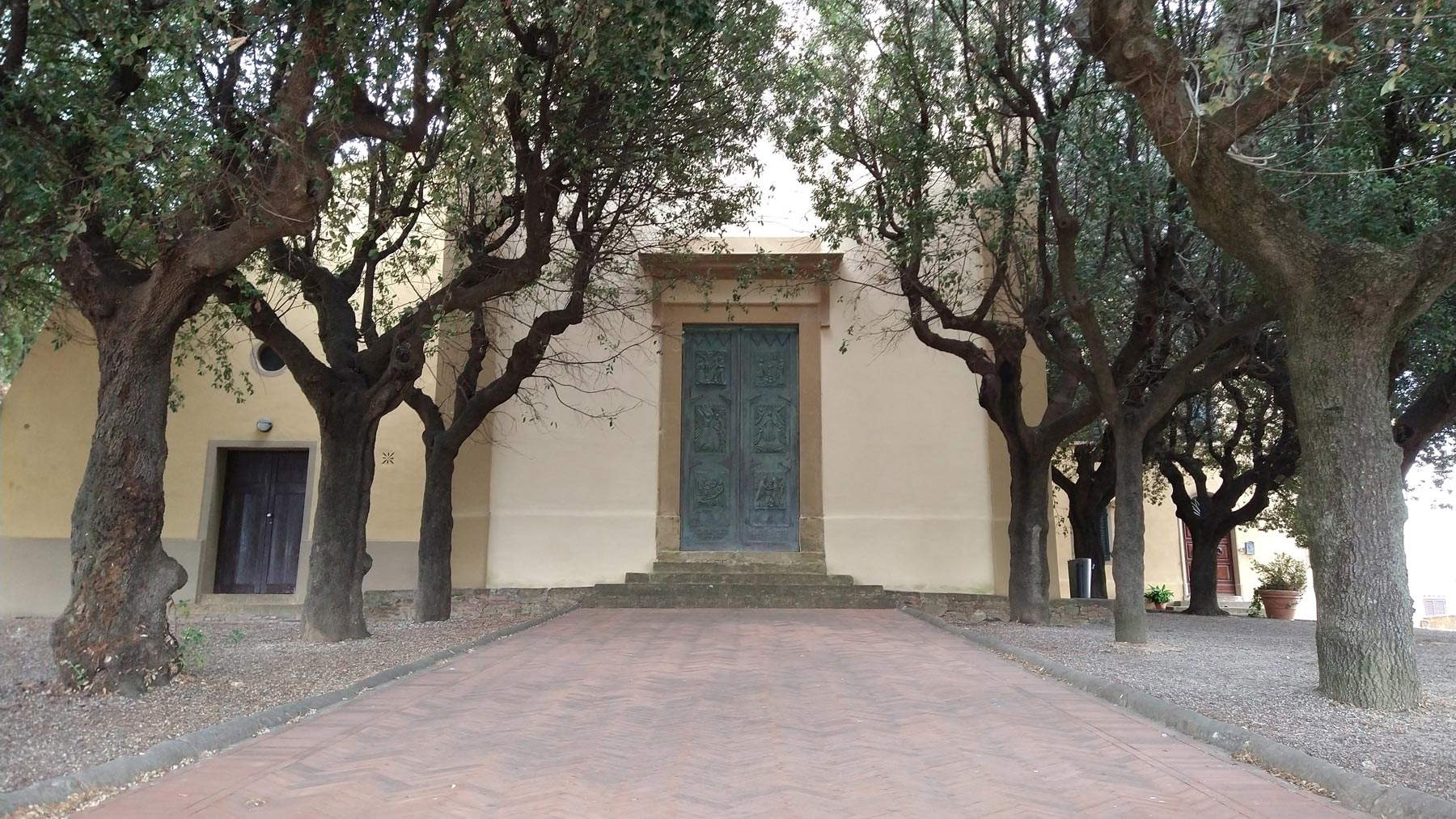 |
| The church of the Assumption. Ph. Credit Finestre Sull’Arte |
 |
| Through the streets of Montescudaio. Ph. Credit Finestre Sull’Arte |
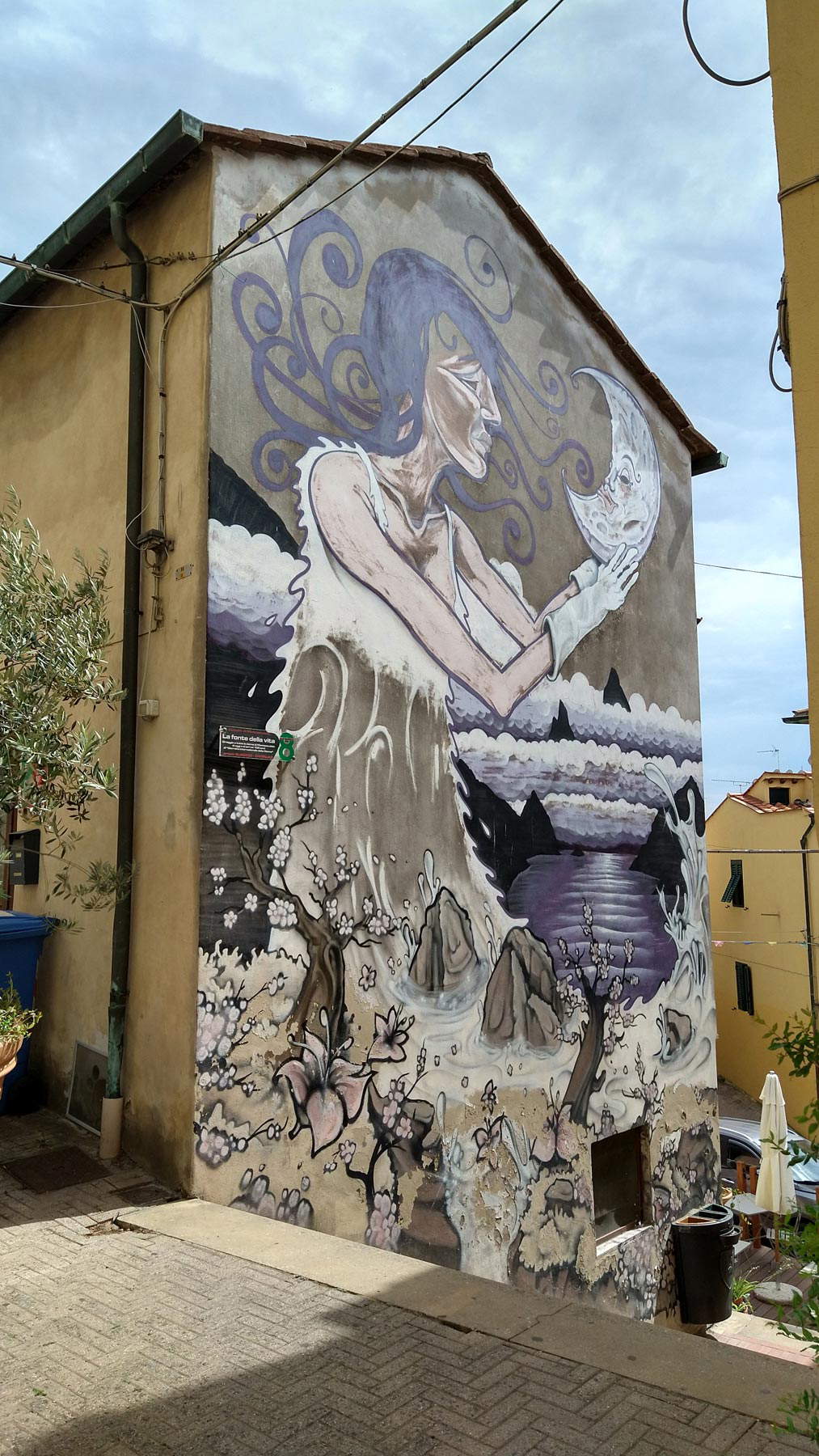 |
| Through the streets of Montescudaio. Ph. Credit Finestre Sull’Arte |
The locals are proud of this because they say it is one of the most expansive views in Tuscany: on fine days, the outline of distant Corsica can be seen from this splendid terracotta-paved terrace. Closing the view, on the side facing Volterra, is the Church of the Assumption, the main one in the village, of ancient origins, since the first mention dates back to 1092: also destroyed in 1846, like the whole upper part of the village, it was rebuilt in the 1850s, and took on its present appearance. Inside, one will be surprised to see a not inconsiderable Annunciation by Andrea Vicentino from the early seventeenth century: a recent attribution, since until 2014 the beautiful painting was generically assigned to an unknown of the Venetian school, and only after restoration a few years ago was the name of this Tintoretto collaborator advanced. Painting that may simply have been purchased on the antiques market by some benefactor of the abbey: the Vicentino was in fact used to paint works that would end up on the market. Just below the Guardiola, one arranges the picturesque district of Poggiarello, the only one that survived the earthquake in the upper part of Montescudaio: one- and two-story stone cottages that line up clustered along the steep slopes leading to the castle.
Descending, however, on the opposite side, one encounters the shadow of the tall Civic Tower, which in ancient times marked the entrance to the castle, and walks toward the higher of the two main streets: one will realize that, with a few exceptions, namely Palazzo Ridolfi and Palazzo Guerrini, i.e., the residences of the two main families who inhabited the village in historical times, and the Town Hall (near which is the pleasant Oratory of the Santissima Annunziata, with its faux neoclassical façade from the 1930s), there are no magnificent or simply large palaces in Montescudaio: Montescudaio has always been a poor village of peasants, who spent their miserable existence between the stables where their herds were housed, the farms, the oil mills, and the fields of the Cecina Valley. An existence that was always the same, marked by the rhythms of the earth, in a village that had taken leave of history after entering the orbit of Florence. So much so that, after World War II, the inhabitants, attracted by the job opportunities offered by the coast, abandoned Montescudaio en masse, which within two decades found itself, in the early 1970s, with half the population it had after the war. A situation that has been reestablished only in recent years, since the proximity to Cecina and the sea have made the plain surrounding the hill on which the village stands an area of industry and commerce.
However, the hamlet remains shrouded in silence. And this is perhaps one of the reasons why some people, perhaps foregoing visits to better-known and more beaten locations, come up here, in the shade of the holm oaks, in the coolness of the sea breeze that laps the first offshoots of the hills that accompany the course of the Cecina, among these ancient walls marked each year by interventions byurban artists, to admire the vestiges of the village, and that incomparable view that echoes one of the most poetic pages of D’Annunzio’s Forse che sì forse che no , which tells of a night when Aldo Inghirami, from a terrace of his Volterra home, turns a glance at the landscape: “in the valley whitewashed the lunar clays like a gathering of mausoleums; down there, perfidiously glittered the serpentine Cecina; down there, between Montescudaio and Guardistallo, the marine soil was an eternal depth like the abode of the Mani.”
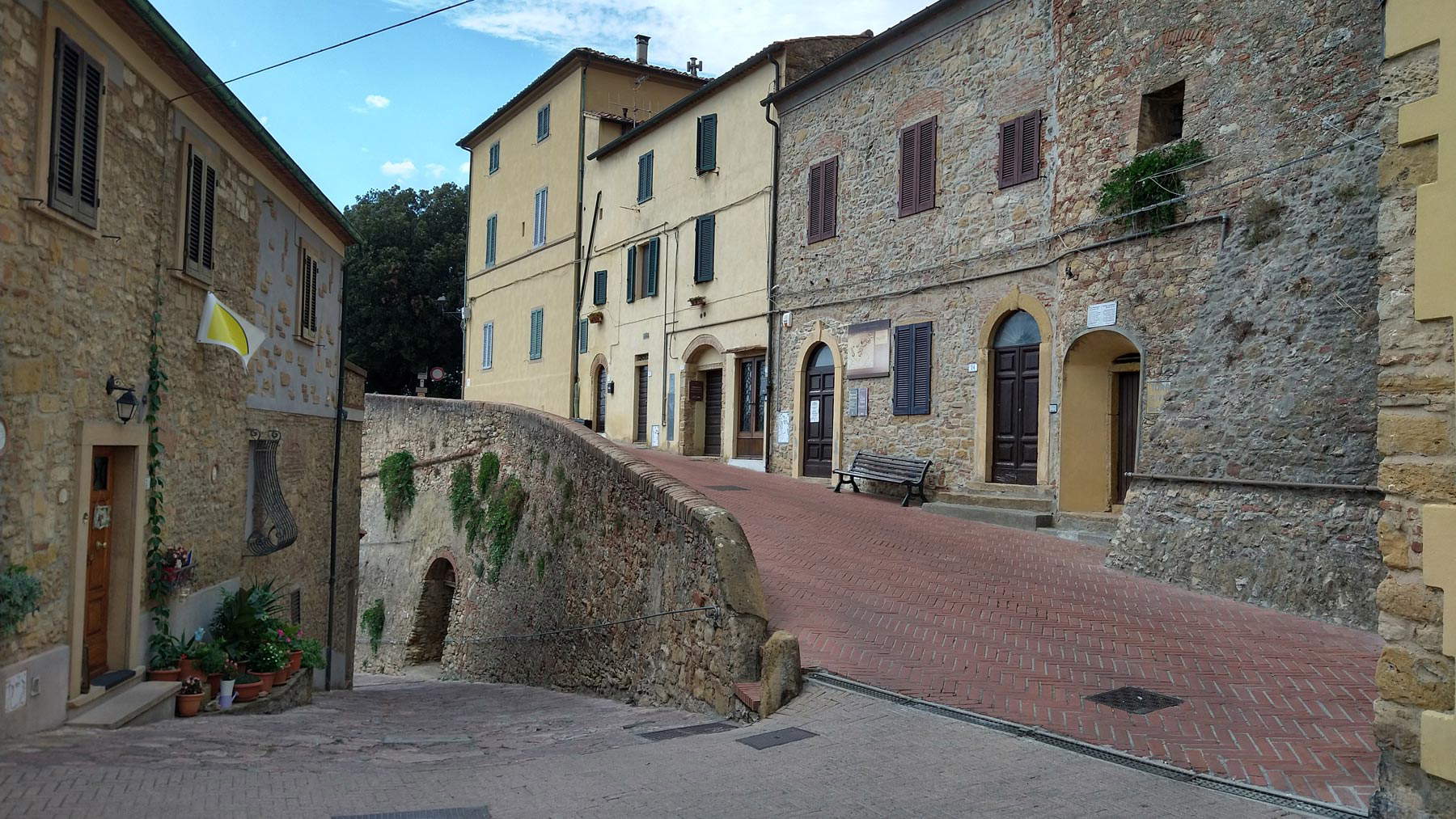 |
| Through the streets of Montescudaio. Ph. Credit Finestre Sull’Arte |
 |
| Through the streets of Montescudaio. Ph. Credit Finestre Sull’Arte |
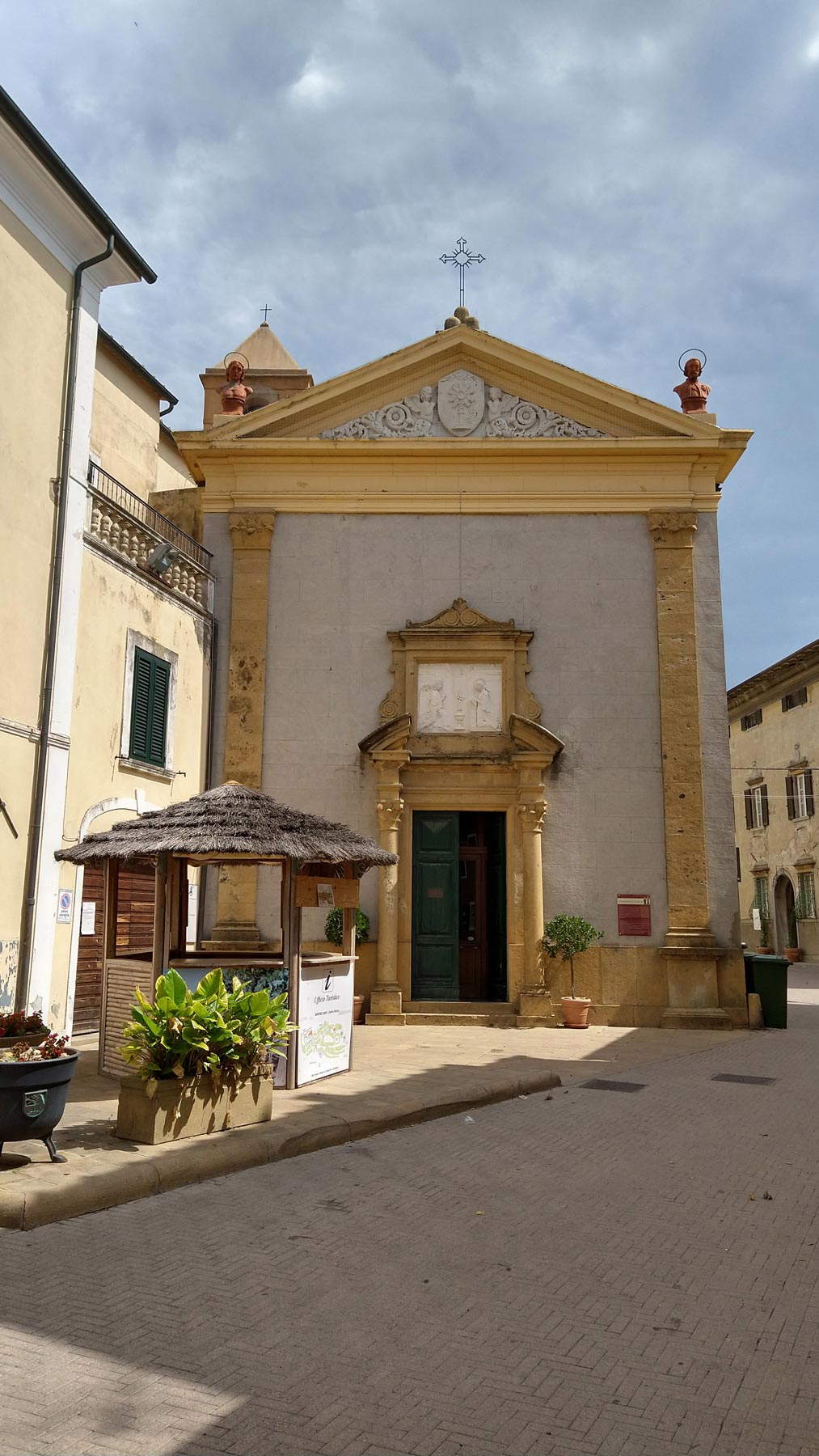 |
| The oratory of the Annunziata. Ph. Credit Finestre Sull’Arte |
 |
| Guerrini Palace. Ph. Credit Finestre Sull’Arte |
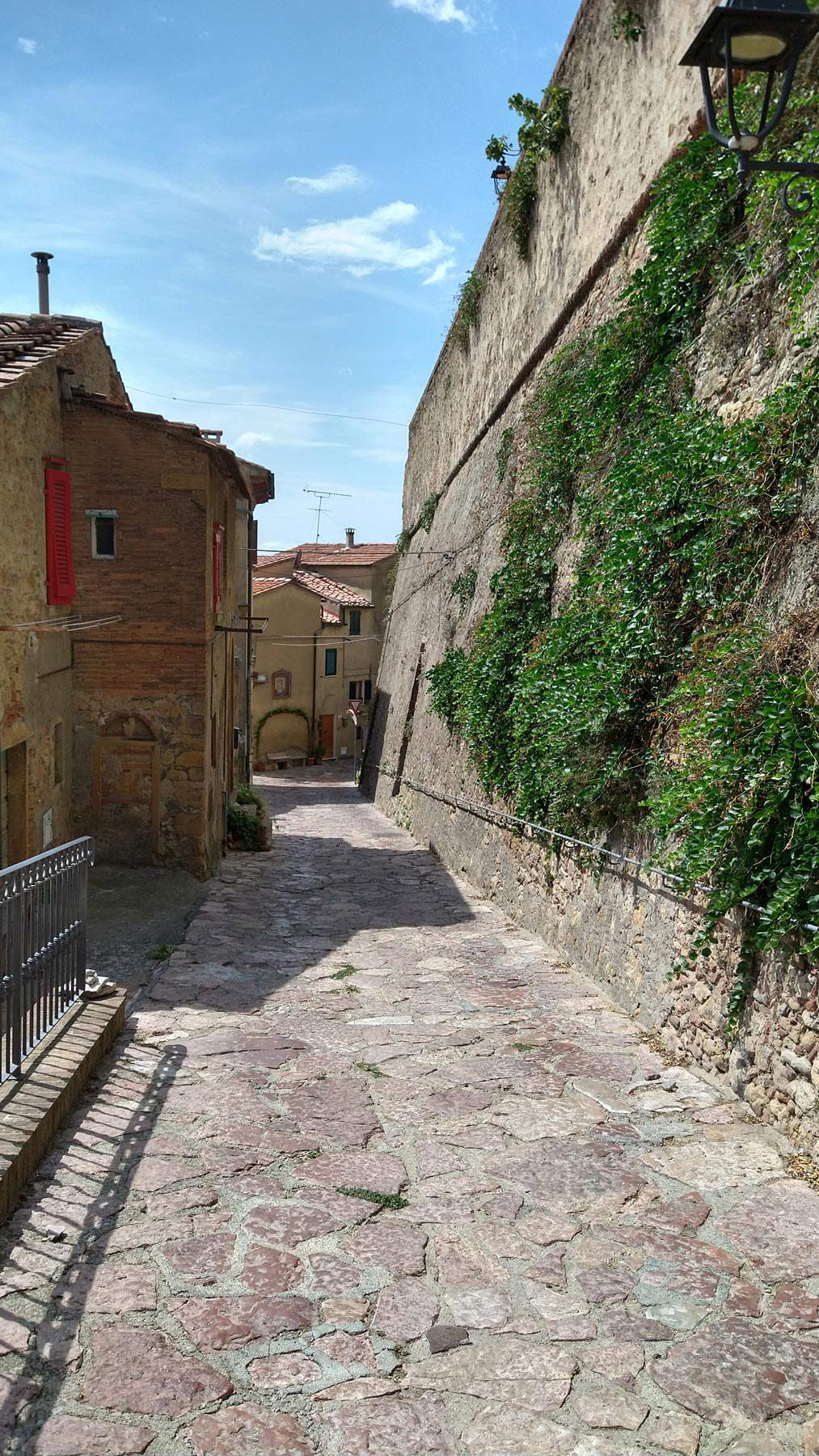 |
| A section of the walls of Montescudaio. Ph. Credit Finestre Sull’Arte |
Article written by the editorial staff of Finestre sull’Arte for UnicoopFirenze’s “Toscana da scoprire” campaign.
 |
| The village of Montescudaio, an ancient terrace overlooking the Cecina Valley and the sea |
Warning: the translation into English of the original Italian article was created using automatic tools. We undertake to review all articles, but we do not guarantee the total absence of inaccuracies in the translation due to the program. You can find the original by clicking on the ITA button. If you find any mistake,please contact us.